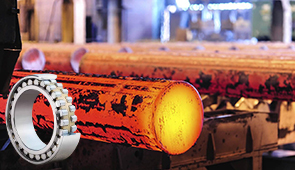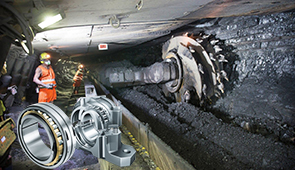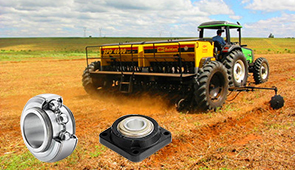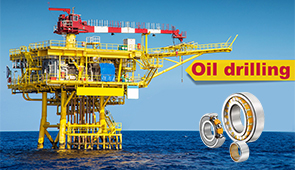Unlocking the Secrets of Lube Oil: Your Ultimate Guide to Lubricating Oil
Lubricating oil, often referred to as “lube oil,” plays a critical role in the performance and longevity of machinery, engines, and mechanical systems across multiple industries. As a pivotal component of modern engineering, it ensures optimal operation by reducing friction, minimizing wear, and facilitating heat dissipation. This guide aims to demystify the complexities of lube oil, examining its composition, functionality, and importance across various applications. Whether you are an industry professional, a machine operator, or simply curious about the science behind lubrication, this comprehensive guide will equip you with a detailed understanding of the underlying principles, properties, and types of lube oils. By the end, you’ll gain valuable insights into how lubricating oil supports efficient machinery performance and enhances durability in even the most demanding environments.
What Are the Different Types of Lube Oil?
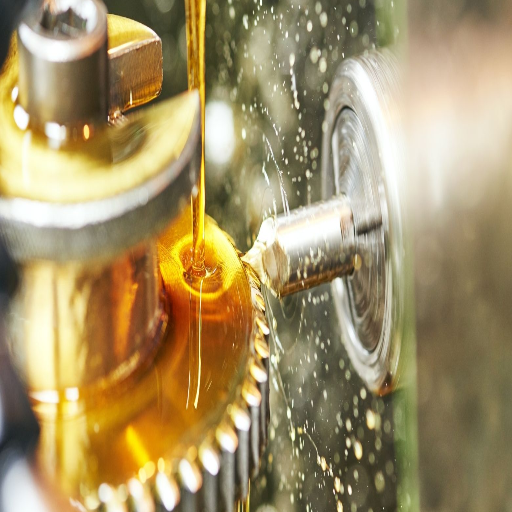
Mineral oil-based lubricants
Lubricants of mineral oil origin are produced from the refinement of crude oil and are categorized based on the extent of treatment and refinement done to them. These lubricating oils fall into three major categories Group 1, Group 2, and Group 3 as classified. The determination of these groups is based on the degree of saturation, sulfur content, and viscosity index. For example:
- Group I: Contains 0.03% – 0.1% sulfur; it has a lower viscosity index (80 -120) and is much less refined. It is ideal for general-purpose lubrication in non-demanding settings.
- Group II: This grade has sulfur content below 0.03%. It is noted for a higher Viscosity index(90-120) and better oxidative stability due to frontal saturation.
- Group III: Features high performance with very low empty sulfur content, over 120 viscosity index, and is highly pure. This grade is usually used for supercharged or synthetic-like applications.
Mineral oil-based lubricants have broad uses due to their low prices and numerous vendor solutions. However, performance is often hampered under extreme conditions, such as too high temperatures or conditions that require very high thermal stability thus requiring the use of custom engineered solutions.
Synthetic lubricating oils
Synthetic lubricating oil products are demonstrated to be effective in solving performance problems in extreme operating conditions. The oils are synthesized from polyalpha-olefin (PAO), esters, or higher-grade base stocks. Their properties include high thermal stability, advanced oxidation resistance, and consistent performance. Their composition mitigates the shortcomings associated with mineral oils, notably greater rates of thermal degradation and prolonged operational wear.
- Thermal Stability: Capability to operate effectively at temperatures reaching 200°C without appreciable degradation in performance, and thus mineral oils don’t perform as well.
- Viscosity Index (VI): High as 150 which ensures that there are little or no viscosity changes with temperature range.
- Oxidation Resistance: The service life of the oil is prolonged because of thermal or oxidative breakdown.
- Pour Point: Enables effective operation for PAO-based synthetics in low-temperature environments.
- Flash Point: Ensures that there is little or no chance of vaporization and ignition in high-temperature systems.
The aforementioned performance characteristics greatly increase the usability of synthetic lubricants in high-speed machinery, jet engines, and industrial compressors, among other areas that require higher dependability and efficiency.
How is Lube Oil Produced and Refined?

The journey from crude oil to lubricant
To answer your question concisely, the process of transforming crude oil into lubricant involves several key steps, each designed to achieve the precise chemical and performance characteristics required for high-quality lubrication.
- Distillation: The crude oil is first subjected to atmospheric and vacuum distillation to separate it into various fractions based on their boiling points. Lubricant base oils are typically derived from the heavier fractions collected during vacuum distillation.
- Refining: To ensure optimal performance, the base oil undergoes refining processes such as solvent extraction, hydrocracking, or catalytic dewaxing. These methods enhance the base oil’s viscosity index, reduce impurities like sulfur and nitrogen, and improve thermal stability.
- Hydrotreatment: This step improves oxidation stability by saturating hydrocarbons and removing undesirable elements. It ensures the resultant lubricant has better durability under high-temperature operations.
- Blending: The refined base oil is then blended with performance-enhancing additives. Common additives include anti-wear agents, antioxidants, detergents, and viscosity improvers, tailored to meet the specific demands of the application.
By following these steps, crude oil is meticulously transformed into lubricants capable of delivering high efficiency, dependability, and longevity in diverse operational environments. This technical refinement ensures the derived lubricant not only meets stringent industry standards but also excels in demanding applications such as high-speed machinery and extreme temperature conditions.
Refining processes and additives
The steps to create a lubricating oil are numerous, and each is focused on the removal of impurities, and adding attributes to the base oil. During the first stage, crude oil is separated into a few fractions after irrigation distillation is performed on them. Lubricating oil feedstock is extracted from these fractions and then subjected to hydrocracking or solvent extraction. These processes make sure undesired components like sulfur, aromatics, and paraffin wax, which could capture and ruin the quality of the oil, are removed. Hydrocracking makes use of great pressure, around 10,000 to 15,000 kPa, and elevated temperatures near 400 to 450 degrees Celsius. This helps in breaking down larger molecules of the base oils. The result is a remarkably pure and stable oil with high viscosity and excellent temperature characteristics.
- Oxidation inhibitors: Helps reduce the chemical decomposition of oil from large amounts of oxygen– giving the oil a longer life.
- Detergents and dispersants: Ensure the machine stays clean by removing sludge and preventing deposits from forming in tough areas.
- Anti-Wear Agents: Minimize surface wear under high-pressure conditions, meeting ASTM D4172 standards for wear protection.
- Friction modifiers: Enhance the mechanical efficiency of the body by minimizing the energy loss caused by the friction.
The choice and dosage of these additives are designed according to the technical kinematic viscosity, pour point, flash point, and ISO, ASTM, or SAE requirements to suit the specified application. The performance of lubricants with the incorporated advanced base oils and these sophisticated additives is exceptional under various and severe operating conditions.
Quality control and ISO standards for lube oil
The lubrication oil production quality control process is quite systematic. It includes tests on raw materials, during production processes, and after production. Compliance with ISO 9001 and relevant industry regulations guarantees triple performance of reliability, consistency, and functional requirements.
- Kinematic Viscosity (ASTM D445): Measured to ensure the lubricant works at necessary levels in all operating conditions, important for the effective functioning of the machinery.
- Viscosity Index (ASTM D2270): Identifies the temperature range of fluidity for lubricants in various operational conditions.
- Pour Point (ASTM D97): Defined as the lowest temperature at which oil remains liquid and is useful in cold regions.
- Flash Point (ASTM D92): The temperature automatically reached by the lubricant that produces vapors capable of combustion gives the application a critical functionality.
- Acid Number (ASTM D664): Measured to monitor the extent of corrosion and the degree to which the oil has been degraded.
All of those measurements have defined testing procedures to ensure the precision and reliability of results. Loyalty to the requirements set by ISO and ASTM standards ensures that the lubricants are not only practical, but also effective, ecologically wholesome, and safe for use in multi-mechanical systems to achieve their best performance.
What Are the Key Properties of Lube Oil?
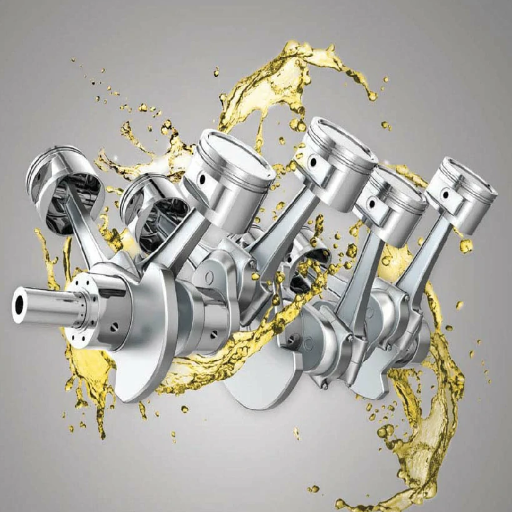
Viscosity and its importance
Lubricating oil is its primary function and it has a crucial physical attribute – viscosity. In simpler words, viscosity estimates the flow resistance of the oil at a set temperature and defines an oil’s ability to lubricate Ate, reduce frictions, dissipate heat, and protect machinery parts from wearing out.
The viscosity of multigrade oils is defined by the broad SAE J300 standards for the cold start (low temp) and high temp performance of the lubricant. The low, high, and rapid change temperature viscosity performance of oil can be identified and analyzed through cSt at 40 degrees Celsius and 100 degrees Celsius (ASTM D445). Selecting an oil with a defined ought cSt guarantees his high loads and extreme temperature bears no issue.
- Kinematic Viscosity (ASTM D445): Measure cSt of the oil at 40 and 100 degrees.
- Viscosity Index (ASTM D2270): An estimation of how much the oil’s cSt will change during temperature variations, as well as an indication of thermal stability regarding cSt.
Selecting viscosity guarantees minimal energy loss and operational demand, but most importantly, prolongs the equipment c service life.
Thermal stability and heat transfer capabilities
Thermal stability is the oil’s resistance to breakdown at high operating temperatures. This is a critical factor for performance consistency and management of harmful system deposits like sludge and varnish. On the other hand, the capability for heat transfer defines the extent to which the oil is capable of removing heat from critical components so that system efficiency is maintained without overheating.
- Flash Point (ASTM D92): This parameter provides the oil’s ignition temperature. The greater the temperature, the better the flash point which guarantees thermal stability.
- Pour Point (ASTM D97): This specifies the oil’s lowest fluidity temperature. Oil with lower pour points can provide better performance in cold regions, while still maintaining an operational temperature range where thermal stability can be achieved.
- Oxidation Stability (ASTM D943): This parameter determines how well the oil can withstand oxidative degradation over a period without losing functionality.
When choosing oils with specific characteristics, optimal thermal stability and good heat dissipation are ensured which significantly contributes to the sustained service life, reliability of the equipment, and reduction of performance losses.
How is Lube Oil Used in Different Industries?
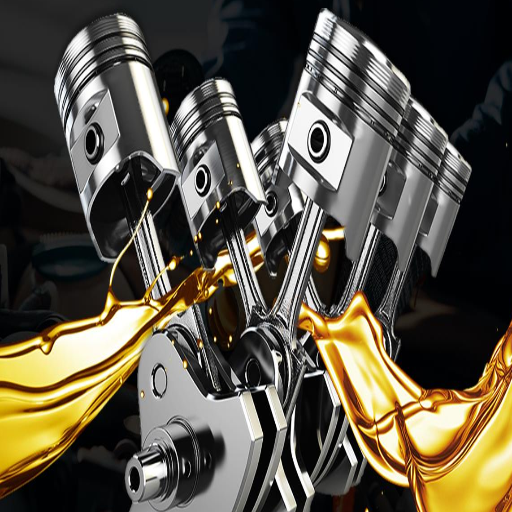
Automotive applications: engine oil and transmission fluid
Both engine oil and transmission fluid play an important role in the efficacy and lifespan of an automotive system. In an automobile, oil works at several levels. First, it lubricates the movable parts of the engine so that the components of the engine do not rub against each other and result in friction and heat generated. Some of the important features of oil are as follows:
- Viscosity Grade (SAE J300): It measures the oil’s flow ability to nullify specific temperatures. Multigrade oil’s (e.g., 5W-30) viscosity allows them to work smoothly at a range of temperatures such as cold starts and operating high temperatures.
- Total Base Number (TBN, ASTM D2896): This is a measure of how much alkaline additive is present in the oil. This value helps in ascertaining the oil’s neutralizing capacity against acidic components fuel combustion byproducts, which is significant for helping in cleaning the engine and preventing corroding.
- High-Temperature High-Shear (HTHS) Viscosity (ASTM D4683): This factor reflects the oil’s film strength retention under extreme temperature and stress oil conditions.
On the other hand, transmission fluid serves multiple purposes. It works for the proper functioning of automatic and manual transmissions by lubricating, cooling, and ensuring smooth power transfer.
- Frictional Properties (OEM – -specific tests): Essential shift properties for clutch engagement, aid the smooth shifting of gears in automatic transmissions.
- Thermal Stability (ASTM D6463): It helps guarantee the efficacy of the oil at extremely high-operating temperature conditions without degrading.
- Shear Stability (ASTM D6278): Tests the mechanical stability of the fluid, checking its ability to retain viscosity under mechanical stress.
- Anti-Foaming Characteristics (ASTM D892): Eliminates formation of air bubbles ensuring the fluid remains effective during use.
Selecting the proper engine oils and transmission fluids will enable automotive systems to work more efficiently with less wear and extended service life.
Industrial machinery lubrication
Proper lubrication is fundamental in ensuring flawless operation and upkeep of industrial machines while ensuring that their efficiency, reliability, and lifespan are not compromised. Such conditions are only met with the use of specialized industrial lubricants, which are designed to minimize friction, wand ear, and protect all components under varying operational conditions. Some important factors to consider in industrial lubrication are:
- Viscosity and flow properties: The lubricant viscosity must match the operational requirements of the machinery, ensuring the film strength is adequate in all temperature ranges.
- Oxidation Stability (ASTM D943): shows the extent to which a lubricant is breakdown resistant chemically while undergoing oxidation, therefore prolonging the usage intervals and minimizing downtime.
- Load-Carrying Capacity (FZG Test): Measures the ability of lubricant to work under high mechanical loads, which is important in gearboxes and heavy load applications.
- Corrosion and Rust Prevention (ASTM D665): Protects and safeguards sensitive areas of metal surfaces against moisture and contaminants.
- Contaminant Control (ISO Cleanliness Code): Defines the clean levels needed to avert abrasion and component failure due to solid particles or debris.
For long-lasting machine health, routine assessment of lubricant performance and lubrication system design is of utmost importance. Industrial operators can deal with unplanned service interruptions by adopting more accurate maintenance approaches through the usage of premium lubricants together with integrating predictive maintenance strategies.
Marine and aviation lubricants
Marine and aviation lubricants facilitate the reliable operation of specific equipment that exists under highly demanding conditions. They are purpose-designed to operate under performance specifications which have to be met under extreme temperatures and load limits, as well as the presence of corrosive environments like saltwater or high atmospheric pressure.
Marine Lubricants:
- Water Separation (ASTM D1401): Emulsification can cause a decline in performance, and marine lubricants should be able to separate from water while maintaining proper lubrication which does not hinder immersion.
- Corrosion Protection (ASTM D665): It is essential to guard against the corrosion caused by saltwater for bearings and shafts which are most prone to exposed components.
- Thermal Oxidation Stability (ASTM D943): The prolonged life of the lubricant for marine engines that are used under high temperatures and pressure is guaranteed by high thermal stability.
Aviation Lubricants:
- High-Temperature Resistance (ASTM D3336): In aviation, lubricants need to maintain their viscosity while protecting the specific components at extreme operational temperatures, often exceeding 500°F in jet engines.
- Low-Temperature Fluidity (ASTM D972): Ensures the lubricant maintains its effectiveness in high altitude circumstances where the temperature can drop significantly.
- Shear Stability (ASTM D445): Protection against breakdown in viscosity under excessive mechanical stress on turbines and other aviation engine components.
Through these measures, aviation and marine lubricants guarantee operational reliability, lower maintenance costs, and endurance of equipment life under industry-specific conditions. For operators, accurate tracking and selection of lubricants aligned with these standards is crucial in attaining optimal performance levels and safety.
What is the Proper Way to Handle and Maintain Lube Oil?
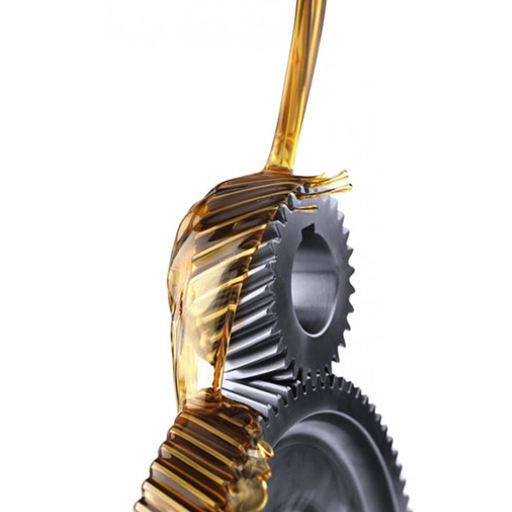
Storage and handling best practices
I ensure the efficient use and storage of oil to avoid degrading its effectiveness over time which includes proper lube oil storage that requires a tidy, dry, dimly lit area free from direct heat and pollution. I ensure the storage units remain at a temperature of 40 degrees Fahrenheit up to 120 degrees Fahrenheit. This inhibits any changes to the oil. In addition, I make certain to keep the containers closed as any moisture getting inside the container can foster microbial growth.
In addition, I use dedicated and specific tools when working with the lube oil to prevent any cross-contamination. As a further precaution, I make sure to always filter the oil before putting it into the system. This ensures no particulate matter is left. Periodic checks of the storage containers for leakage, signs of rust, or any damage are imperative to ensure the quality of the oil remains intact over time.
- Cleanliness Level (ISO 4406): Sensitive systems can get damaged if the level of particulate contamination goes above the approved threshold.
- Moisture Content (ASTM D1744): Keeping the oil’s water level low is very essential as it prevents oxidation along with ensuring proper lubrication.
- Viscosity Index Stability (ASTM D2270): Keeping the oil’s storage conditions in check aids in upholding the oil’s viscosity characteristics.
By keeping close supervision of these factors, I can improve the durability of the machines while also ensuring a safe work environment.
Oil analysis and condition monitoring
Oil analysis and condition monitoring are paramount in guaranteeing the reliability and longevity of critical machines and systems.
- Cleanliness Level (ISO 4406): Particulate contamination contributes to abrasive wear and can clog the systems. The routine analysis involves monitoring the concentration of solid particles in the oil and ensuring it does not exceed the preset cleanliness code for specific oil-containing devices.
- Moisture Content (ASTM D1744): Water in oil above the acceptable limit leads to oxidation, hydrolysis, and weak lubricant film. Moisture monitoring or percentage determination should not exceed the acceptable limits for most systems which is generally below 0.1 % for critical systems.
- Viscosity (ASTM D445): An oil’s ability to flow and its resistance to flow are very important in the maintenance of a lubricating film. Temperatures above or below those specified can result in contamination or thermal degradation and require corrective action.
- Total Acid Number (TAN, ASTM D664): An increase in it to a certain level indicates oil oxidation or acid formation contamination. Free mechanical oil tan control is provided for operational control, expediency, and assurance of optimal lubricant stability.
- Wear Concentration of Metals (ICP Spectroscopy): Monitoring the presence of wear metals (for example, Fe, Cu, Al) allows assessment of the component wear rates. These levels suggest operational stress or the failure of specific parts.
Regular oil analysis and monitoring of these factors would ensure maximum operational efficiency while minimizing the risk of unplanned downtime and mechanical failures.
Frequently Asked Questions (FAQs)
Q: What is lubricating oil and why is it important?
A: Lubricating oil, often derived from crude oil, is a type of oil used to reduce friction between moving parts in machinery. It’s crucial for maintaining the efficiency and longevity of various mechanical systems, including diesel engines, turbines, and industrial equipment. Lubricating oil helps prevent wear, dissipate heat, and protect against corrosion, making it essential for the proper functioning of many machines.
Q: How does lubricating oil work in a diesel engine?
A: In a diesel engine, lubricating oil, commonly known as motor oil, plays several vital roles. It forms a protective film between moving parts like pistons and cylinder walls, reducing friction and wear. The oil also helps cool engine components, clean the engine by carrying away contaminants to the oil filter, and seal gaps between piston rings and cylinder walls. A well-maintained lubricating oil system is crucial for the engine’s performance and longevity.
Q: What is the ISO classification system for lubricating oils?
A: The ISO (International Organization for Standardization) classification system for lubricating oils is based on their viscosity. It uses numbers to indicate the oil’s thickness, with higher numbers representing thicker oils. For example, ISO 32 is a thinner oil compared to ISO 68. This system helps users select the appropriate type of oil for specific applications, ensuring optimal performance and protection for various machinery and operating conditions.
Q: How often should I change the lubricating oil in my equipment?
A: The frequency of oil changes depends on several factors, including the type of equipment, operating conditions, and the specific oil being used. For motor oil in vehicles, changes are typically recommended every 3,000 to 7,500 miles or every 3 to 6 months. However, for industrial equipment or specialized applications, oil change intervals may be determined by regular lube oil analysis. This analysis checks for contaminants, viscosity changes, and other indicators that the oil may need to be replaced.
Q: What is a lube oil cooler and why is it important?
A: A lube oil cooler is a heat exchanger designed to maintain the optimal oil temperature in a lubrication system. It’s particularly important in high-performance engines and industrial machinery where oil temperatures can rise significantly. By keeping the oil at the right temperature, lube oil coolers help maintain the oil’s viscosity and protective properties, ensuring effective lubrication and preventing oil degradation. This component is crucial for extending the life of both the oil and the equipment it protects.
Q: Can turbine oil be used as a lube oil in other applications?
A: While turbine oil is specifically formulated for use in turbines, it may be used in other applications that require similar properties. Turbine oils are known for their excellent oxidation stability, water separation abilities, and anti-wear properties. However, it’s crucial to consult equipment specifications and lubricant experts before using turbine oil as a substitute in other systems. The wrong type of oil can lead to inadequate protection or even equipment damage.
Q: What is a seal oil supply system?
A: A seal oil supply system is a crucial component in many industrial machines, particularly in turbines and compressors. It provides lubricating oil to mechanical seals, which prevent gas or fluid leakage where rotating shafts exit casings. The system ensures a continuous supply of clean, cooled oil to the seals, maintaining their integrity and preventing contamination. Proper maintenance of the seal oil supply system is essential for the efficient and safe operation of the equipment.
Q: How can lube oil analysis benefit equipment maintenance?
A: Lube oil analysis is a powerful predictive maintenance tool. By regularly testing oil samples, technicians can detect early signs of equipment wear, contamination, or oil degradation. This analysis can reveal issues such as coolant leaks, fuel dilution, or excessive metal particles, indicating potential problems before they lead to equipment failure. Lube oil analysis helps optimize oil change intervals, reduce downtime, and extend equipment life, making it a valuable practice in industrial and automotive maintenance.
Q: What are the main components of a lubricating oil system?
A: A typical lubricating oil system consists of several key components: an oil tank or sump for storage, a main oil pump for circulation, an oil filter to remove contaminants, an oil cooler to maintain optimal temperature and various pipes and channels for distribution. In some systems, you may also find a pressure relief valve, oil pressure sensors, and temperature gauges. Each component plays a vital role in ensuring that clean, cool oil is supplied to all necessary parts of the machinery.
Q: What are synthetic lubricating oils, and when are they used?
A: Synthetic lubricating oils are artificially made lubricants designed to offer superior performance compared to conventional petroleum-based oils. They’re engineered to provide better temperature stability, improved oxidation resistance, and enhanced protection against wear. Synthetic oils are often used in high-performance engines, extreme temperature conditions, and applications requiring extended oil change intervals. While they may be more expensive initially, synthetic oils can offer long-term benefits in terms of equipment protection and reduced maintenance costs.
UCTH213-40J-300 with Setscrew(inch)
CNSORDERNO: Normal-duty(2)
TOGN: UCTH213-40J-300
SDI: B-R1/8
SD: 2 1/2
UCTH212-39J-300 with Setscrew(inch)
CNSORDERNO: Normal-duty(2)
TOGN: UCTH212-39J-300
SDI: B-R1/8
SD: 2 7/16
UCTH212-38J-300 with Setscrew(inch)
CNSORDERNO: Normal-duty(2)
TOGN: UCTH212-38J-300
SDI: B-R1/8
SD: 2 3/8
UCTH212-36J-300 with Setscrew(inch)
CNSORDERNO: Normal-duty(2)
TOGN: UCTH212-36J-300
SDI: B-R1/8
SD: 2 1/4
UCTH211-35J-300 with Setscrew(inch)
CNSORDERNO: Normal-duty(2)
TOGN: UCTH211-35J-300
SDI: B-R1/8
SD: 2 3/16
UCTH211-34J-300 with Setscrew(inch)
CNSORDERNO: Normal-duty(2)
TOGN: UCTH211-34J-300
SDI: B-R1/8
SD: 2 1/8












